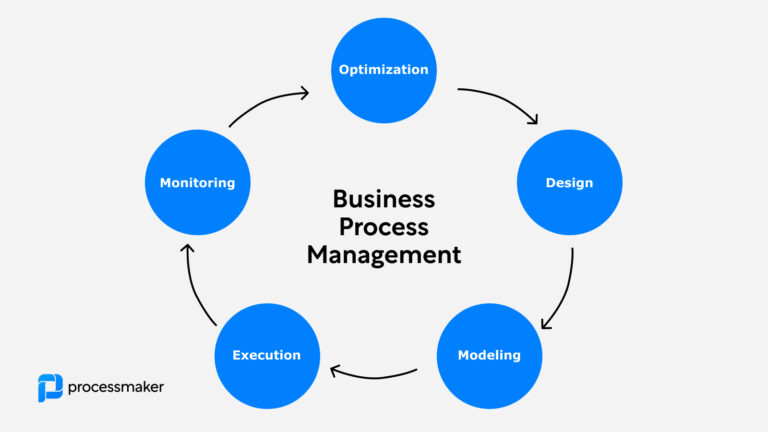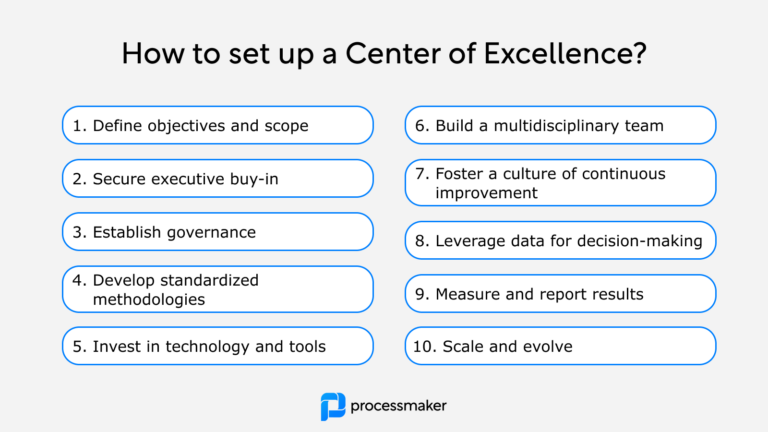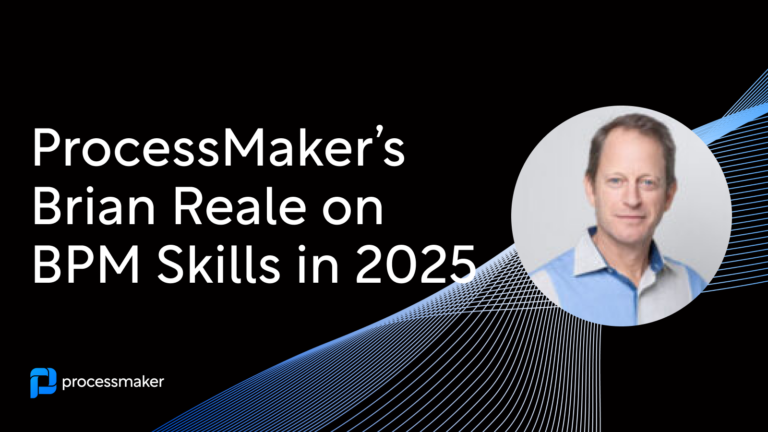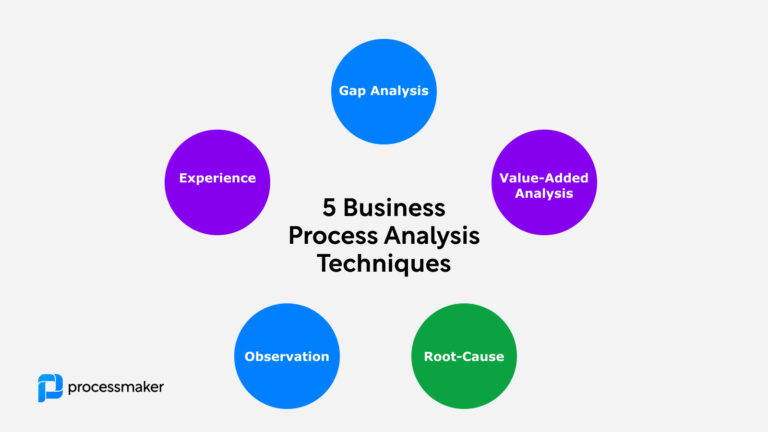Business Process Management, or BPM, is a set of different tools and techniques that together help businesses improve and optimize their processes. BPM aims to streamline and improve internal processes so that organizations can achieve their objectives, such as lower costs and increased effectiveness, easier and faster.
BPM involves the analysis, design, implementation, optimization, and ongoing improvement of all the activities happening within an organization.
Applying business process management systems is a key strategy for enhancing workflow efficiency and operational improvements. These systems help organizations map, model, and automate their business processes, offering functionalities such as tracking ongoing work, adaptive analytics, and providing templates for specific workflows.
By implementing BPM, organizations can identify improvement areas and achieve better business outcomes, reinforcing the relevance of understanding the BPM lifecycle. Nowadays, BPM is one of the go-to frameworks that companies refer to when starting with digital transformation activities. It gets misinterpreted as a single solution or software sometimes, but BPM is definitely more than that.
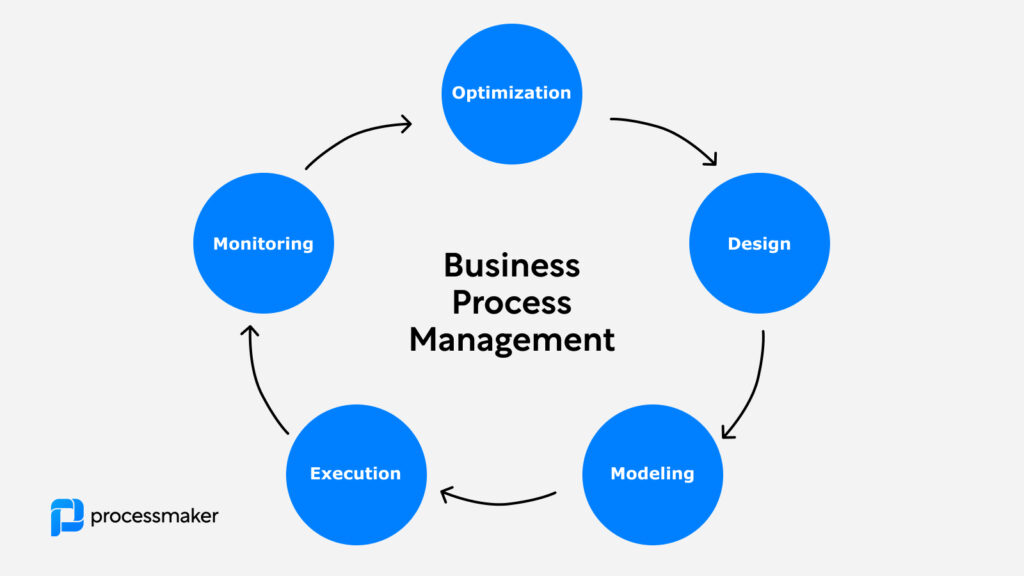
Business Process Management lifecycle
According to Gartner, BPM can improve project success by 70%. It helps you achieve a competitive advantage by making the right decisions at the right time, reducing costs, and increasing revenue. In this article, we will have a look at what BPM is, how it works, what it is best at, along with its challenges and benefits.
Brief history of BPM
While there is no clear cut to when exactly did BPM emerge, one is certain – the concept and idea of it have been around for years, if not centuries. With the rise of the industrial revolution, the need for improving the processes grew faster than ever, which also eventually drove changes to the non-manufacturing side of the operations.
Frank Gilbreth was one of the early pioneers of Business Process Management. He created one of the first process mapping frameworks that broke down complicated and long processes into more manageable and sensible steps. His work was focused on optimizing production processes to increase efficiency and productivity and involved creating a graphical representation of the steps in a process. Since then, BPM has been gaining momentum and growing tremendously, although under different names, but with the same overall goal. Hence, in the 1990s, Business Process reengineering became very popular.
Later, the terms like Business Process Management Suite or Intelligent Business Process Management were coined to describe the frameworks that all deal with similar challenges – making processes smoother and more efficient.
BPM today
Nowadays, the focus of BPM is not solely on saving costs and being more efficient but rather on providing better services for customers. Document-centric BPM refers to business processes primarily involving the creation and management of documents, such as legal agreements or revisions of content, and is significant in improving efficiency and accuracy in document-driven workflows prevalent in departments like Sales, Finance, and HR. Automating business processes improves efficiency and reduces manual tasks, enabling workflows to be streamlined.
Companies are more concerned about enabling better collaboration and creating a pleasant customer experience than ever before. BPM systems play a crucial role in streamlining operational efficiency and enhancing productivity. Therefore, BPM is developing fast to be able to accommodate these demands; and the current tools are now capable of discovering the processes in a much faster and leaner manner.
BPM vs Business Process Automation (BPA)
BPA and BPM are not the same. BPM is a process management methodology focused on managing business processes, while BPA is an automation tool that can be used to manage business processes. Business process automation is a key tactic within BPM to optimize efficiency and reduce manual work.
The main difference is that BPM focuses on improving an existing process, while BPA automates existing manual processes and makes them more efficient. BPM tools include things like workflow management systems or task management software, which help you organize your company’s workflow to make it more efficient and streamlined.
BPM vs. Project Management
Business process management (BPM) is a strategic approach to managing processes that aim for long-term value. Project management, on the other hand, is more tactical and short-term in nature. BPM involves a holistic view of an organization’s workflows from end-to-end–and often across multiple departments or divisions–while project management focuses on individual tasks within one particular area of focus within an organization’s broader workflow.
For instance: If you’re working on improving customer service at your company, your BPM strategy would consider all aspects of how customers interact with your company–from initial contact through delivery or aftercare services–while your project would be focused specifically on improving call center agents’ performance during customer interactions.
Benefits of BPM
There are many benefits that BPM could potentially bring to organizations. Some of the higher-impact benefits are listed below.
- Enhanced Efficiency. By finding and removing bottlenecks, duplicate work, and inefficiencies in the business process, BPM can assist in enhancing the efficiency of a company’s operations. BPM focuses on optimizing business operations to achieve measurable business improvements and operational efficiency. A document-centric approach in BPM further improves the efficiency and accuracy of workflows associated with documents, which is crucial for departments like Sales, Finance, and HR that require signatures or approvals.
- Increased Agility. BPM gives businesses the flexibility they need to respond instantly to shifting consumer demands and market situations. Businesses can adapt quickly to new possibilities or threats and maintain their competitiveness in a dynamic market environment by assessing and optimizing their business processes.
- Improved Customer Experience. BPM enables businesses to better comprehend the requirements and expectations of their clients. Businesses can deliver individualized and consistent results that boost brand advocacy and loyalty by mapping out customer journeys and optimizing touchpoints.
- Better Risk Management. BPM helps organizations discover and manage risks in their operations by identifying potential areas of risk and introducing preventive measures wherever needed.
- Regulatory Compliance. With the help of BPM, companies can ensure that they meet the necessary legal and regulatory standards, keep the company’s reputation as a responsible business, and avoid penalties.
Challenges of BPM
As with any change management-related initiatives, there are a few challenges associated with BPM.
- Resistance to change. Since BPM implementation may alter how things have traditionally been done in the company, there may be resistance from employees who may be a bit skeptical and reluctant about changing their work practices and implementing new tools and processes.
- Complexity. There are often numerous interconnected steps and stakeholders involved in business processes; therefore, it can get difficult to map and optimize certain processes.
- Data availability. BPM relies on reliable data for decision-making, yet many firms have trouble gathering, cleaning, and accurately analyzing data.
- Continuous Improvement. BPM is a continuous process that calls for a dedication to continuing process updating and monitoring. As with anything requiring consistency, it might get challenging to maintain it for longer periods of time.
BPM use cases
In terms of where and when to use BPM, the sky’s the limit. It can virtually be applied to any organization or industry that has repetitive, manual, or complex processes of some sort. The suitable industries are many – from finance & accounting companies to pharmaceuticals to public organizations.
For example, BPM could be utilized by a manufacturing company to optimize its production processes, while a healthcare company could use it to improve its customer service. Another example could be an insurance company using BPM to automate insurance request processing or invoice handling. Document-centric BPM refers to business processes primarily involving the creation and management of documents, such as legal agreements or revisions of content.
It is particularly significant in departments like Sales, Finance, and HR, focusing on improving the accuracy and speed of document handling. Understanding existing processes is crucial for designing improved processes and ensuring efficient operations that can adapt to various challenges. For more examples of use cases see:
- Process mining in banks and financial services
- Process mining for financial operations
- Process mining for procurement
- Process mining for insurance companies
How does BPM help with digital transformation?
Business process management (BPM) is a core component of digital transformation. It helps you to:
- Create repeatable, standardized processes that can be applied across multiple applications and platforms. For instance, suppose you have a customer service process that works well in one application or platform. As a result, it also works well on other applications and platforms–including those that are new or still being developed. This means there’s no need for IT teams to reinvent the wheel when they want to create new services or products; they can use existing processes as the basis for creating new ones.
- Ensure that all people involved in delivering service are following the same steps every time they interact with customers or partners (and this is particularly important for compliance purposes).
The first step in any digital transformation is understanding the current state of your business and identifying which processes are critical and how they could be improved. You can do this by looking at existing systems such as ERP or CRM, but it’s also critical to get out into the field and talk directly with customers and employees who interact with those systems every day.
Another benefit of BPM is it offers a scalable approach to digital transformation. You can start with a small project and then scale it up if it’s working well. This means that you don’t have to create new technology infrastructure or system integration for your business processes to be compatible with each other–you can use the same process across multiple applications and platforms.
BPM Strategy
Before getting started with BPM, it’s essential to define any bottlenecks you have correctly. When defining your goals, make sure you’re ambitious but realistic about what can be achieved in 1-3 months (or if it’s longer than three months, break it up into smaller tasks). It would help if there were tangible ways of measuring success so that everyone involved would know when they’ve reached their target or still need to meet it.
BPM aligns with the overarching business strategy to ensure processes contribute effectively to organizational goals, especially in response to evolving technologies and competitive landscapes. As well as setting personal fitness goals like these two examples above, some businesses also use BPM software because they want employees at all levels within an organization to work together towards common goals like customer satisfaction or sales targets.
BPM techniques and business process management tools
As mentioned earlier, Business Process Management is a combination of tools and techniques rather than a single software. Process mapping, as mentioned earlier, is one of those techniques that entails visualization of the workflows and provides a concise and clear overview of the processes.
Business process management systems assist organizations in mapping, modeling, and automating their business processes, offering capabilities such as tracking ongoing work, adaptive analytics, and providing templates for specific workflows, all aimed at improving efficiency and facilitating continuous improvement. Business process modeling notation (BPMN) is another tool that can be used to represent processes visually.
Process monitoring and analysis involve measuring and analyzing the process performance, using information and metrics to identify improvement areas. This can involve using tools such as dashboards and analytics software. Business process management software (BPMS) includes features like process mapping, automation, and analytical capabilities, which help in automating and improving business processes.
Future trends in BPMS include the integration of low-code automation and the interplay between BPMS and robotic process automation. To learn more about different tools and software used in BPM, see:
- Process Mining
- Task Mining
- Process Discovery
- Business Process Analysis
- Business Process Monitoring
- Business Process Implementation
BPM Best Practices
BPM Best Practices are a set of guidelines and recommendations for implementing BPM. They define how to implement BPM consistently and effectively, and through a set of standards. BPM Best Practices guide the following:
- Process modeling, including the use of standard notation and standards such as Business Process Modeling Notation (BPMN), Unified Modeling Language (UML), Web Services Flow Language (WSFL), and others. A process model serves as a benchmark to evaluate current practices and identify areas for enhancement.
- Process execution, including process automation technologies like workflow engines or rules engines.
- Business intelligence reporting on process performance metrics such as cycle time or cost per unit produced.
Bottomline
BPM is a useful discipline that can support businesses in streamlining their operations and thus achieving certain business goals. Business Process Management can increase efficiency, keep costs down, and increase the customer experience. BPM implementation can be difficult due to the high initial investments and potential change resistance from the employees.
However, BPM may be a useful tool for achieving digital transformation and enhancing business performance when used effectively. With modern BPM tools like ProcessMaker, you should no longer worry about the complexity of BPM initiatives but rather enjoy the automated ways of improving the processes.
